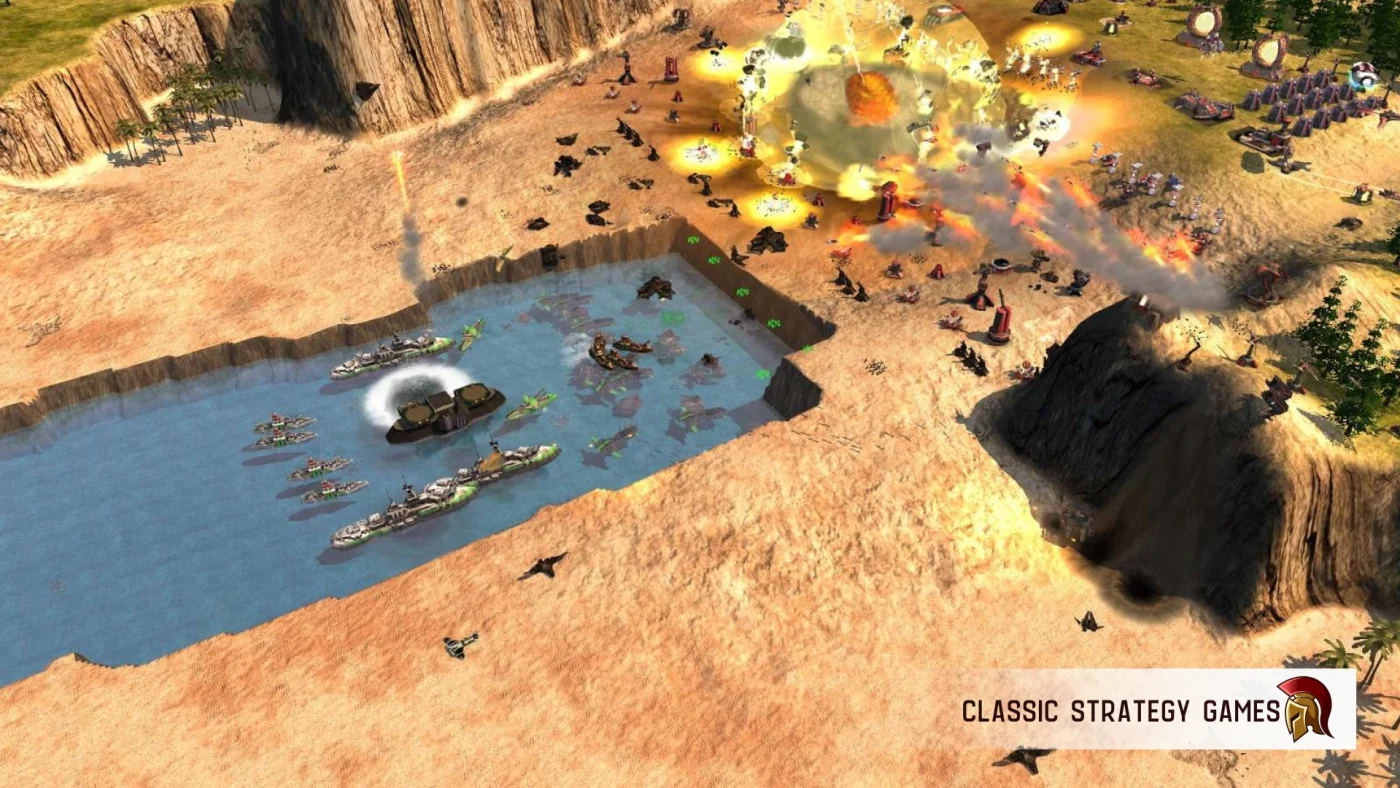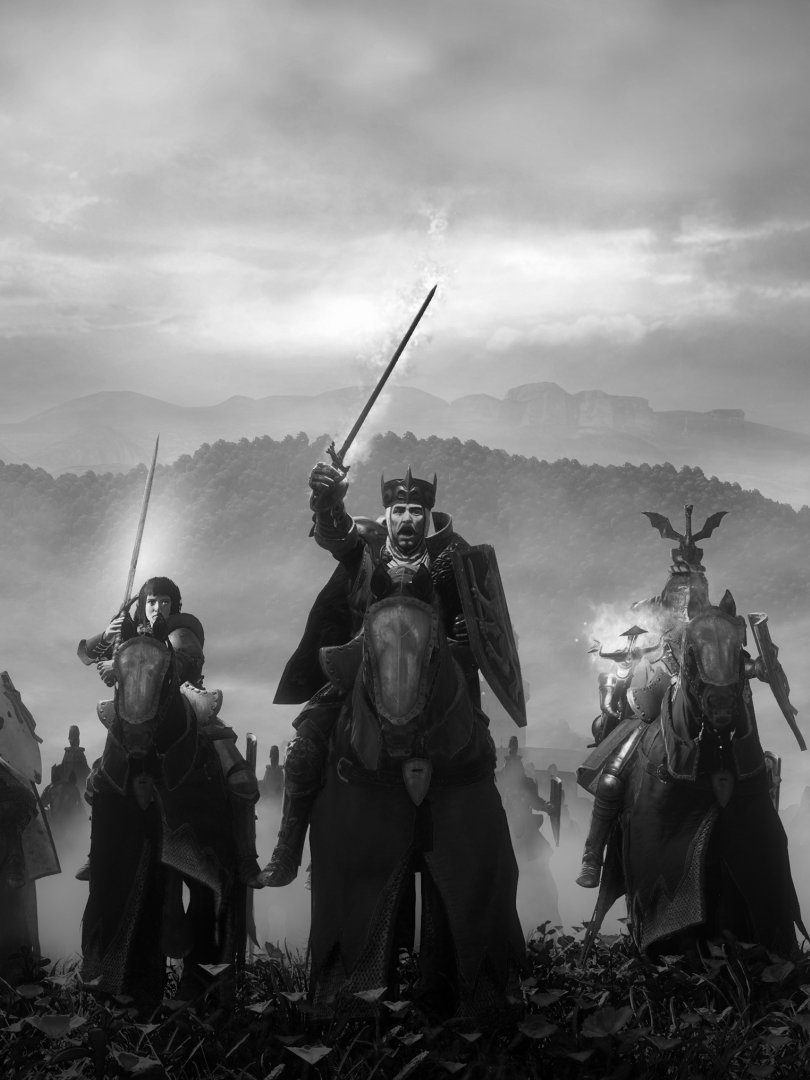Zero-K launched in 2010 as an open-source real-time strategy game built on the foundations of classic large-scale RTS design. Developed by a dedicated team of modders and strategy enthusiasts, it evolved from the Spring Engine, originally used for Total Annihilation mods. Zero-K took the best ideas from Total Annihilation and Supreme Commander – massive battles, deep automation, and physics-driven combat – and reworked them into a faster, more fluid experience with an emphasis on player choice and strategic freedom.
Instead of forcing rigid build orders and predictable economic cycles, Zero-K encouraged adaptability. The game replaced traditional resource gathering with a streamlined system that rewarded map control and positioning. Battles didn’t just come down to who had the bigger economy – players had to think on their feet, using terrain, unit composition, and even physics to outmanoeuvre opponents.
A Fluid and Responsive Economy
Unlike many RTS games that rely on fixed resource nodes or harvesters, Zero-K used a continuous flow economy. Metal and energy were gathered automatically, and managing income was about efficiency, not micro-ing individual workers. Instead of forcing players into rigid structures, the game let them focus on the bigger picture – expanding territory, producing units, and responding to enemy threats in real time.
The construction system allowed players to queue up buildings and units without worrying about spending all their resources at once. The game intelligently adjusted build speeds based on available resources, preventing unnecessary downtime. This automation freed players from the tedious aspects of economy management, letting them concentrate on tactics and positioning.
A Map That Matters
Zero-K’s terrain was a fundamental part of the battlefield. Units interacted with slopes, cliffs, and water in ways that added real strategic depth. Bots could climb steep inclines that tanks couldn’t navigate. Artillery gained range advantages from high ground. Amphibious units allowed for attacks from unexpected angles.
Destructible terrain also played a role. Some maps featured collapsible hills or obstacles that could be strategically destroyed to create chokepoints or expose enemy positions. This level of environmental interaction made positioning and map control just as important as unit production.
A Military Built for Experimentation
Zero-K’s unit roster threw out traditional faction-based design in favour of a single tech tree with a vast array of specialized units. Players could experiment with different combinations instead of being locked into predetermined strengths and weaknesses. Some units excelled in mobility, others in raw firepower, and some used unique mechanics like cloaking or teleportation to gain an edge.
Unit physics played a major role in combat. Shots were physical projectiles affected by terrain, movement, and unit speed. Faster units could dodge incoming fire, artillery needed to account for elevation, and knockback effects could push enemies into disadvantageous positions. This created dynamic battles where positioning and timing mattered just as much as raw numbers.
The game also introduced a modular approach to superweapons. Instead of one-size-fits-all game-enders, Zero-K allowed players to construct and modify their own massive war machines. These customizable behemoths weren’t just about brute force—they required careful planning to deploy effectively.
Automation and Accessibility
One of Zero-K’s biggest innovations was its approach to automation. Many RTS games demand constant micro-management, but Zero-K built intelligent AI controls into unit behaviour. Players could set custom orders for how units responded to threats, adjusted targeting priorities, and even programmed automated retreat conditions.
Commanders – powerful starting units that could be customized and upgraded – acted as both early-game builders and powerful late-game combatants. They weren’t just support units; they evolved over time, adapting to the player’s strategy and filling gaps in their army’s composition.
For new players, Zero-K’s interface provided extensive tools to ease the learning curve. Advanced options allowed veterans to fine-tune control, while newcomers could rely on automation to handle routine tasks. This balance made it one of the most approachable large-scale RTS games, even for those unfamiliar with the genre.
A Constantly Evolving Game
Zero-K’s open-source nature meant that it never remained static. The development team and community continuously refined mechanics, introduced new units, and rebalanced gameplay based on player feedback. Regular updates kept the game fresh, ensuring that strategies evolved alongside the meta.
Multiplayer remained the heart of the experience, with both ranked matches and cooperative modes against AI. Large-scale battles, sometimes involving hundreds of units on screen at once, ran smoothly thanks to the game’s optimized engine. Custom lobbies, modding support, and community-made maps kept the game alive long after its initial release.
A Legacy of Innovation
Zero-K proved that large-scale RTS games didn’t have to be slow or overly complex. It stripped away unnecessary micromanagement, encouraged creative strategies, and gave players the freedom to play their way. By prioritizing automation, physics-driven combat, and deep strategic choices, it offered a fresh take on the genre while paying homage to its roots in Total Annihilation and Supreme Commander.
For those looking for an RTS that rewards adaptability and strategic thinking over rote memorization, Zero-K remains one of the best examples of how the genre can evolve without losing what makes it great.


